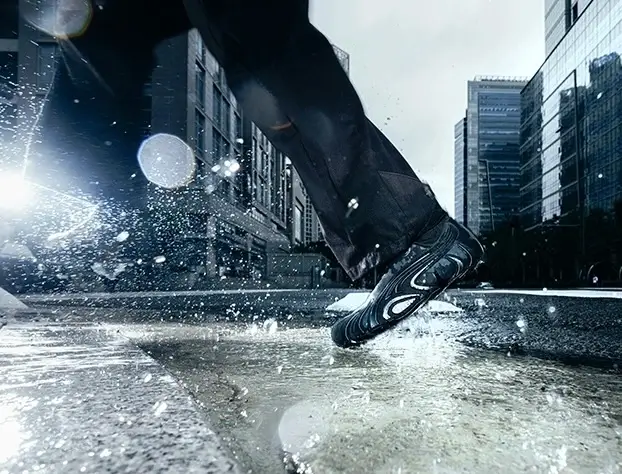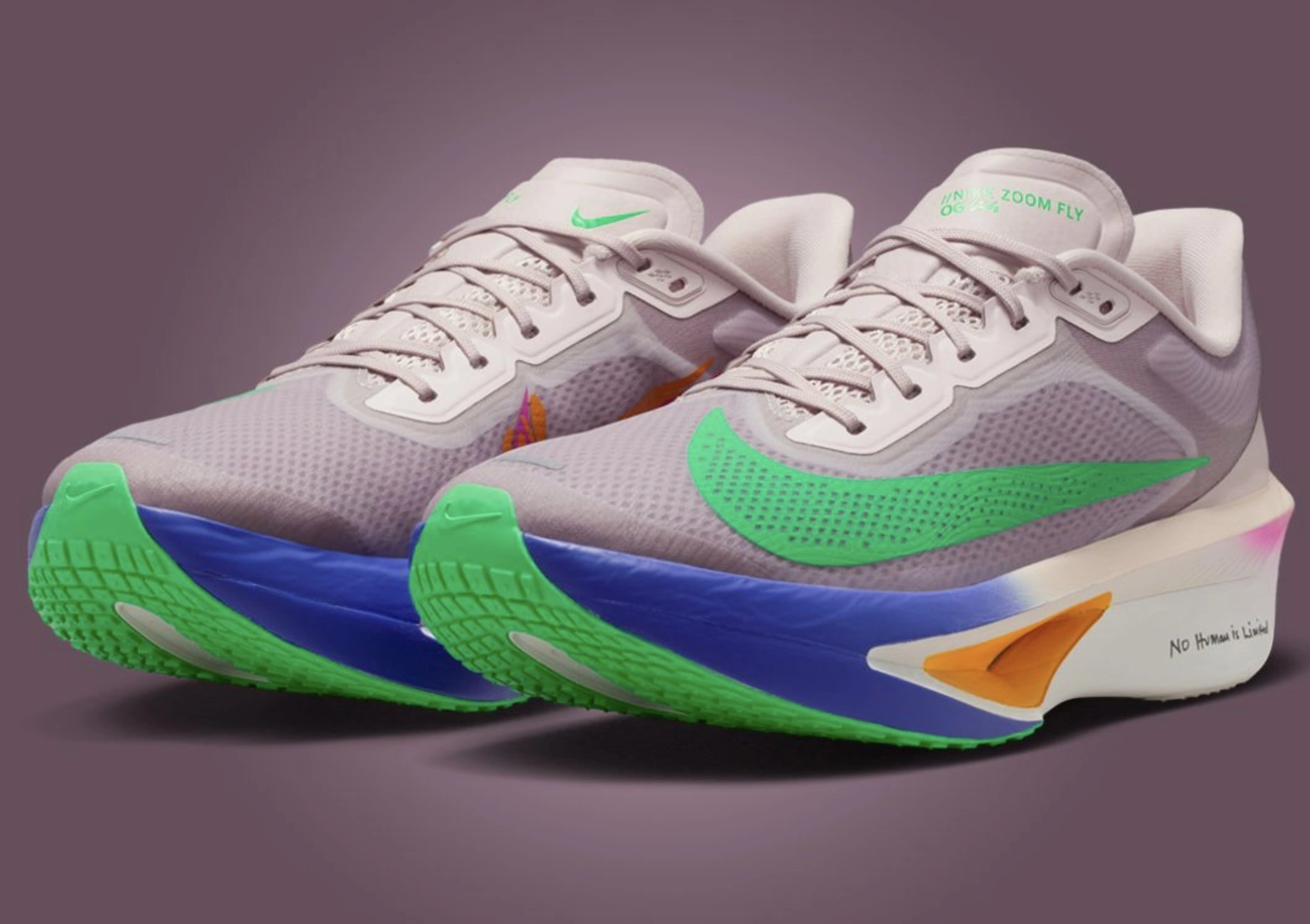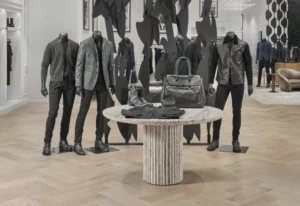The Balenciaga Distressed Paneled Shoe, much like many of the brand’s other creations, has become a lightning rod for both adoration and criticism within the fashion industry. With its chunky, oversized silhouette, distressed materials, and avant-garde lacing system, it encapsulates Balenciaga’s flair for pushing boundaries and disrupting traditional ideas of style. However, while some celebrate its boldness and innovation, others decry its steep price tag and perceived emphasis on status over substance. This critical blog delves into the key elements of this controversial shoe, examining its design, cultural impact, and the tension it represents between high fashion and consumer critique.
Design: Grunge Meets Futurism
At first glance, the Balenciaga Distressed Paneled Shoe demands attention. Its exaggerated silhouette, a defining feature of the brand’s current aesthetic, creates an instantly recognizable look that seems equal parts grunge and high-fashion futurism. The shoe is made from a combination of distressed leather and mesh panels, which gives it a well-worn, almost DIY appearance that suggests it has been through the wringer. This distressed look is deliberate and has been a hallmark of Balenciaga’s recent designs, especially under the creative direction of Demna Gvasalia, who has made deconstruction and reinvention a key part of the brand’s identity.
The shoe’s unique lacing system, which wraps around the ankle, adds a futuristic, almost utilitarian touch. It’s a nod to both the chunky dad sneaker trend and a more avant-garde vision of footwear that blends function with aesthetics in unexpected ways. The aggressive lines and multiple layers create an impression of movement and durability, even if the shoe’s wearability is a topic of debate among critics. This duality—a shoe that feels at once rugged and futuristic—captures the ethos of Balenciaga’s recent collections: fashion that looks to both the past and the future, often blurring the lines between the two.
However, for many critics, the design is where the shoe’s appeal both begins and ends. While its bold, oversized aesthetic has garnered attention from fashion enthusiasts and collectors, others argue that it is purely a statement piece rather than a functional, quality product. The distressed elements, though visually striking, raise questions about durability and wearability. Is a shoe designed to look worn-out before it has even left the box really worth the price tag it carries?
The Price Tag Controversy
Arguably, the most polarizing aspect of the Balenciaga Distressed Paneled Shoe is its price. With some pairs retailing for over $1,000, it’s a steep investment for a product that, at first glance, looks intentionally damaged. For many critics, this price point epitomizes the broader issues surrounding luxury fashion today: the commodification of scarcity, exclusivity, and hype. To detractors, Balenciaga is capitalizing on a cultural moment where status symbols are created through manufactured rarity and branding rather than the intrinsic value of the product itself.
Critics argue that the shoe’s design, with its distressed and deconstructed look, is not reflective of quality craftsmanship but rather a trend-driven approach that emphasizes aesthetics over longevity. This feeds into a broader critique of designer brands like Balenciaga, which have increasingly embraced irony and disruption as a way to justify exorbitant prices. The idea of paying such a high price for a shoe that appears pre-worn strikes some as absurd, a commentary on how far removed high fashion can sometimes be from the practical concerns of everyday consumers.
However, defenders of Balenciaga’s pricing strategy see the shoe as a luxury item that transcends mere functionality. In their view, the Distressed Paneled Shoe is a work of art, a piece of conceptual fashion that challenges traditional ideas of beauty, value, and wearability. The high price, they argue, is part of the statement—a reflection of Balenciaga’s place within the elite sphere of high fashion. For collectors and fashion enthusiasts, the price tag is not a deterrent but rather part of the allure, signifying exclusivity and the opportunity to own a piece of fashion history.
Status vs. Functionality
This tension between status and functionality is at the heart of the controversy surrounding the Balenciaga Distressed Paneled Shoe. While it undeniably makes a bold visual statement, its practicality as a functional piece of footwear is often questioned. The oversized silhouette, while trendy, may not suit everyone’s taste or lifestyle. The distressed materials, though intentional, suggest fragility rather than durability. For everyday consumers, these factors raise the question: Is the shoe wearable, or is it primarily an object to be admired from a distance?
In this sense, the shoe reflects a broader shift in fashion, where the line between art and utility is increasingly blurred. Many high-end designers, Balenciaga included, are creating pieces that challenge traditional notions of function, focusing instead on pushing boundaries and questioning the very purpose of clothing and accessories. In the case of the Distressed Paneled Shoe, functionality seems secondary to the statement being made—whether that statement is about the nature of luxury, the value of imperfection, or the growing influence of streetwear in high fashion.
At the same time, Balenciaga has always been a brand known for courting controversy and sparking conversation. The Distressed Paneled Shoe is no exception. By intentionally creating a product that feels both accessible and inaccessible—fusing elements of grunge and luxury, wearability and unwearability—Balenciaga continues to position itself as a brand that thrives on provocation. In this sense, the shoe serves its purpose, igniting debates about the meaning of fashion in today’s world.
Impression
Despite the controversy, the Balenciaga Distressed Paneled Shoe has remained popular among fashion enthusiasts, collectors, and influencers. It has become a statement piece, embodying the brand’s commitment to pushing the boundaries of conventional taste. In an era where fashion is increasingly driven by social media, street style, and individual expression, the shoe fits neatly into a broader trend of wearing clothes that spark conversation and challenge norms.
The Distressed Paneled Shoe also speaks to the growing influence of “ugly fashion” or “anti-fashion” trends, where designers intentionally create pieces that subvert traditional ideas of beauty and luxury. Much like Balenciaga’s infamous Triple S sneaker or Gucci’s dirty-looking distressed sneakers, the Distressed Paneled Shoe falls into this category of designs that embrace irony, subversion, and even absurdity. It’s a shoe that says more about the person wearing it than about the shoe itself, serving as both a fashion item and a cultural marker.
For those who buy into the Balenciaga ethos, the Distressed Paneled Shoe represents an opportunity to be part of a larger movement that questions the very foundations of luxury and fashion. It’s a way to signal not just wealth but an understanding of fashion’s deeper cultural significance. On the other hand, for its critics, the shoe is a prime example of fashion’s obsession with hype, status, and artificial scarcity.
A Polarizing Piece of Fashion
The Balenciaga Distressed Paneled Shoe is a polarizing piece of footwear that has divided critics and consumers alike. For some, it represents a bold and innovative statement that pushes the boundaries of what fashion can be. For others, it’s a costly gimmick that prioritizes status and hype over quality and functionality. Ultimately, the shoe embodies the tensions that define contemporary fashion, where art, utility, and luxury collide in unexpected ways.
Whether one sees the Distressed Paneled Shoe as a work of art or an overpriced trend, there’s no denying its impact on the fashion world. It has become a symbol of Balenciaga’s ability to provoke, innovate, and keep the conversation about fashion moving forward.
No comments yet.








